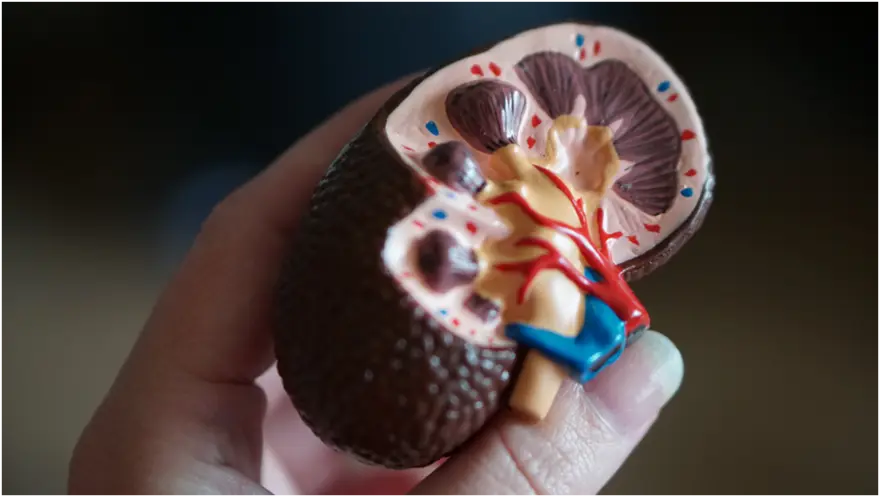Preventive Healthcare
Dialysis: Know everything about it
2241 Views
0

What is Dialysis?
Dialysis is a treatment for patients suffering from kidney disease. Especially for patients with kidney failure, the kidneys stop filtering the blood in the way they are expected. This builds up waste and toxins in the bloodstream. In such cases, dialysis works as a kidney for the body to remove excess waste and fluid from the body.
Who Needs Dialysis?
Only those people who are suffering from highly severe kidney disease, sometimes known as 'kidney failure,' need to undergo dialysis. Numerous medical disorders, such as chronic diabetes, genetic causes, high blood pressure, or injury, might cause kidney failure. In such patients, the kidneys function so poorly that the person requires kidney transplantation or dialysis to survive.
Dialysis may be necessary for a patient depending on symptoms such as confusion or shortness of breath that are indicative of renal failure. Based on stages, clinicians can determine the severity of kidney disease. This dialysis treatment is necessary for people suffering from stage 5 or severe kidney disease. Dialysis patients have significantly lower Estimated Glomerular Filtration Rate (eGFRs), which are fewer than 15 mL/min and indicate renal function. So, if a person suffers from chronic kidney disease, it is recommended to contact a healthcare professional immediately.
What Do the Kidneys Do?
Kidneys are the body's unique filter system. It eliminates excess fluid and waste from your body and reduces acid created by body cells, maintaining water, salts, and mineral levels. This also helps in controlling the blood pressure. The kidneys produce urine during the filtration of waste from the circulation.
What are the types of Dialysis?
There are two main types of dialysis:
- Hemodialysis
- Peritoneal dialysis
What is Hemodialysis?
Hemodialysis is the process of cleaning your blood using a dialysis machine and a specific filter. Hemodialysis is usually performed 3 to 5 times a week to clean the blood in a dialysis centre. The hemodialysis access will be in your arm. In hemodialysis, you may initially get a temporary catheter travelling towards your heart through a vein. You can use it for 90 days and need to replace it after that to avoid infection. Once you get a permanent catheter, you can replace it with a temporary one.
What Happens Before Hemodialysis?
You will have a little surgical dialysis treatment to facilitate bloodstream access before beginning hemodialysis. You might have:
- A dialysis surgeon would connect an artery and vein in your arm during an arteriovenous fistula (AV fistula).
- Using a graft, a soft, hollow tube, the surgeon will connect the artery and vein if they are too small.
The AV fistula creation dialysis procedure is typically performed 4-8 weeks before starting the hemodialysis procedure. This promotes healing of the skin and tissue around the fistula. The majority of patients require 3-4 hour hemodialysis or dialysis treatment per week. You can do this at home or in a hospital.
If there is a need to perform dialysis quickly, your doctor will use a catheter (thin tube) in your neck, leg or chest for temporary access.
What Happens During Hemodialysis?
The blood is transferred from the body into a dialysis machine via tubes during hemodialysis or dialysis treatment. The blood passes through a dialyzer, a filter that removes waste and excess fluid from your blood while in the machine. This blood returns to your body through tubes after the dialysis machine cleans it. The process is called vascular access.
What Happens After Hemodialysis?
After hemodialysis or dialysis, you may feel exhausted or washed out for a few hours. However, people who switch from regular hemodialysis to more frequent report feeling better overall, with more energy and improved sleep.
What is Peritoneal Dialysis?
This is a kind of dialysis for renal failure. It employs a fluid inserted into your stomach and then taken out to clean your blood.
A catheter is inserted through a surgery. This catheter injects a sterile cleansing dialysis machine into your stomach. The fluid remains in the body through the catheter once the filtering dialysis procedure is complete.
What Happens Before Peritoneal Dialysis?
Before peritoneal dialysis, you will undergo a minor dialysis surgical operation around three weeks before the peritoneal dialysis. The dialysis surgeon will insert a catheter, a soft, thin tube, through the peritoneum and into your abdomen. You can even consider opting for this dialysis at home and avoid catheter-site infection.
What Happens During Peritoneal Dialysis?
During the peritoneal dialysis:
- One branch of a Y-shaped tube is attached to the catheter. This tube is further connected to a dialysis solution-filled bag.
- Empty the dialysis bag. It usually takes around ten minutes to get the bag empty. Now, disconnect the tube and catheter.
- Remove the catheter's cap.
- You can perform your regular activities while the solution in the peritoneal cavity absorbs extra fluid and waste from your body. It may take 60-90 minutes.
- After removing the catheter's cover, pour the fluid into a fresh, clean bag using the opposite branch of the Y-shaped tube.
- Repeat these steps four times each day.
You can prefer to do peritoneal dialysis during night time. It can be done through automated peritoneal dialysis, in which the fluid is pumped in and out of your body through cycler pumps while you sleep. The dialysis solution remains in your stomach the entire night as you sleep.
What Happens After Peritoneal Dialysis?
Although the procedure may cause some discomfort, it is not painful. After peritoneal dialysis, you may have a bloated or full feeling. When your stomach is full of fluids, it could protrude more than usual.
What are The Potential Risks or Complications of Hemodialysis?
You may face complications like hypertension, cardiac arrhythmias, reaction to HD membrane, air embolism, allergic reaction, etc., during hemodialysis. However, some complications like air embolism and allergic reactions are now rare because of advanced HD machines. Some of the potential risks include:
- The tube or the needle may emerge from the machine while you get dialysis treatment.
- Your blood pressure may drop during hemodialysis.
What are the potential risks or complications of peritoneal dialysis?
Skin infections around the catheter occur in specific individuals. Additionally, you might develop peritonitis, an illness caused by bacteria that might enter your abdomen through your catheter. Fever, nausea, vomiting, and abdominal pain are some other possible dialysis side effects.
Over time, the abdominal muscles may also weaken due to the pumping fluid and abdominal catheter inserted into your abdomen. When an organ like the small intestine protrudes through the abdominal muscles, it can cause hernia. There can be a bulge between your upper thigh and abdomen or close to your belly button. However, a surgeon can surgically repair a hernia.
Moreover, your body absorbs the sugar dextrose from the dialysis treatment during peritoneal dialysis, which can lead to weight gain.
What's the Outlook (Prognosis) for Someone on Dialysis?
A dialysis patient easily survives 10-20 years. The outlook (prognosis) on dialysis varies according to renal failure cause, age, general health, and other variables. Moreover, this dialysis can be discontinued after a kidney transplant.
Will I Have Activity Restrictions While I'm on Dialysis?
Many dialysis patients continue their busy lives, working, having families, and travelling. Your healthcare practitioner can assist in making arrangements for you by getting just a few dialysis charges to receive dialysis at a centre in your new area when you travel. If necessary, dialysis bags and a mobile home dialysis machine can be brought along for self-dialysis of any type.
While the abdomen fills with dialysis treatment, individuals on peritoneal dialysis may need to reduce their exercise or other physical activities. Having said that, it is advisable to inquire about your participation in particular sports with your peritoneal dialysis or dialysis provider.
When Should I Call the Doctor?
You must consider calling your healthcare provider in the following conditions:
- Trouble urinating
- Fainting, dizziness, unusual thirst (dehydration), or other hypotension-related symptoms
- Vomiting and Nausea
- Infection symptoms such as redness at the AV fistula, fever or oozing or catheter site
- Unusual pain in the abdomen
- Bulging in the groin or abdominal
Conclusion
Dialysis is a lifesaver for people facing End-Stage Renal Disease (ESRD) or kidney failure. You can enquire about dialysis costs in case you are supposed to be on it longer. Your healthcare provider will discuss the types of dialysis and all available options to let you decide whether you want to have dialysis from home or the dialysis centre. However, it is probable that your doctor recommends blood tests or other tests to know the proper functioning of your kidney, and accordingly suggest the dialysis option. With skilled professionals and pathologists, get your blood test reports with Metropolis Labs, a leading pathology service provider offering services at your doorstep.























 WhatsApp
WhatsApp
